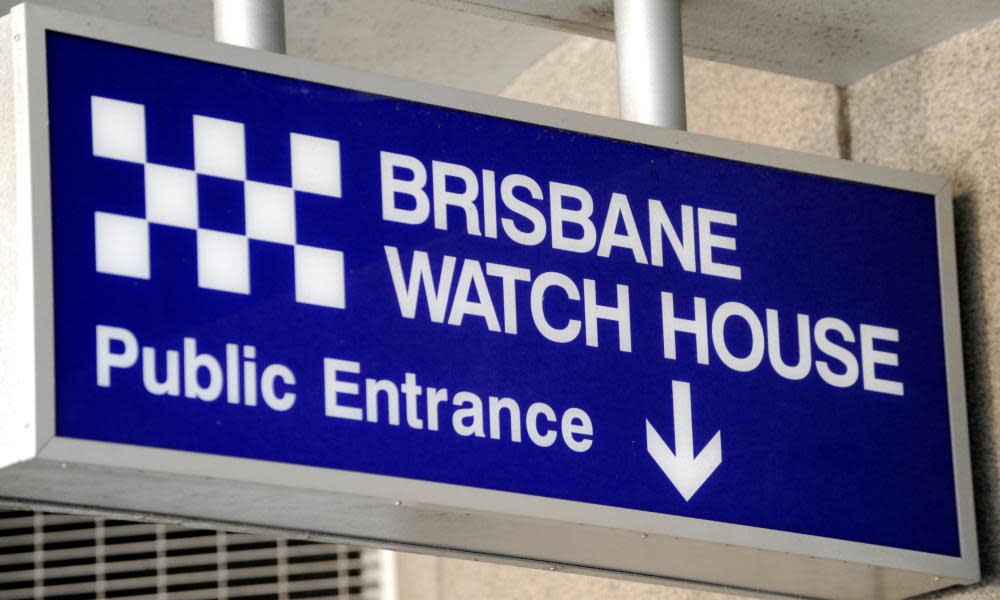Policy backflip in lead-up to Queensland election puts youth in detention centres at risk of coronavirus

The population of Queensland’s youth detention centres has ballooned to near capacity amid a government-sponsored crime crackdown, prompting concern from human rights activists that vulnerable children are being placed at risk during the coronavirus outbreak.
The state’s human rights commissioner, Scott McDougall, said without urgent attention, he thought it “inevitable” that children would again be “warehoused for prolonged periods” in police watch houses – a situation that provoked outcry about their treatment and prompted reforms of the youth justice system.
Related: Coronavirus is a ticking time bomb for the Australian prison system | Thalia Anthony
“Last year we saw children held in adult watch houses in some cases for weeks on end,” McDougall told Guardian Australia.
“On the present trajectory we are rapidly approaching the same situation and the Covid-19 pandemic brings another layer of complexity to this crisis.”
In 2018, Guardian Australia reported concerns about children being held in watch houses for extended periods due to overcrowded detention centres.
The ABC’s Four Corners program last year revealed that children as young as 10 had been housed in police custody alongside maximum security offenders.
The program prompted significant reform by the Queensland government and its approach was praised by human rights groups. It established a separate department for youth justice and announced initiatives to keep children out of detention and watch houses.
Last month the government made an about-face policy pivot: it announced a new “hard line on youth crime” approach that aimed to place more children in detention. This was partly a response to vocal campaigning by local media in Townsville, where Labor seats are considered vulnerable at this year’s state election.
In its announcement, the government said it would take “tougher action on bail” including seeking to keep more children on remand, and a “police blitz on bail” to appeal court decisions.
“These are changes our MPs in Cairns, Townsville, Rockhampton and the Gold Coast have advocated and the government has acted,” the premier, Annastacia Palaszczuk, said.
This week, there are 223 children in youth detention centres; significantly up from late last year, when the initial youth justice reforms were starting to take effect.
There are 258 youth detention beds in Queensland, but it is unclear whether these are all available, as ongoing expansion works at the Brisbane Youth Detention Centre had temporarily reduced its capacity, and these works are ongoing.
Human rights advocates with knowledge of Queensland’s youth detention system say the “safe” capacity of these centres is below the total bed numbers, as crowded facilities limit the ability of authorities to separate detainees of different ages and risk profiles.
Crowding is often also considered a contributing factor to incidents in youth detention centres. On 18 March, a disturbance occurred at the Townsville centre that involved three boys climbing on to the roof.
McDougall said the overwhelming majority of children in youth detention were from Aboriginal families, and many were accused of offences while living in unstable residential care arrangements.
“The situation calls for intensive resources to be made available to Aboriginal controlled organisations to assist the safe return of children to Aboriginal families and kinship carers. Aboriginal voices need to be heard in the process of finding creative solutions to this pressing crisis.”
Concerns about “hard line” policies disproportionately affecting Aboriginal and Torres Strait Islander people are heightened by the Covid-19 pandemic, and broad powers given to police to enforce public health regulations.
Amnesty International Indigenous rights campaigner Lidia Thorpe said detention often took children out of safe environments with family.
“Locking them up is putting them at more risk, given we’ve seen already this virus has got into prisons. Because of the overcrowding it puts kids or anyone at more risk of getting the virus.
“The safest place for these kids is at home.”
Related: NSW police put children as young as nine, many of them Indigenous under surveillance
Thorpe was critical of the government’s youth crime shift, which she said fed into a narrative that promotes racist attitudes towards Aboriginal people.
“I think we have to keep in mind the Queensland election is coming up and unfortunately when we do have progressive governments in power, it becomes a race to the bottom on law and order. We’ve seen this around the country where we’ve had Labor governments in power.
“It’s wrong to suggest that when we see a child misbehaving that the best thing for that is to lock them up and isolate them. If this was happening to non-Aboriginal kids we would see an outrage in this nation, but [because] it’s happening to Aboriginal people it’s like it’s expected.”
The office of the state minister for child safety, youth and women, Di Farmer, said in March there were an average of seven young people a day held in police watch houses – down from 34 in March 2019 – and that the vast majority of those were waiting for a court hearing or processing.
“The average number of days spent in a Queensland police watch house since January 2020 was two days, which reflects the significant transport arrangements required for transfer from remote and regional communities,” a spokesman for the minister said.
“The government is investing $177m in new youth detention centres beds, which includes the expansion of Brisbane Youth Detention centre with 16 new beds due to come online in May, and construction of a new 32-bed youth detention centre at Wacol.
“This investment means state-wide capacity will increase from 258 beds to 306 beds by the end of this year.”

 Yahoo News
Yahoo News 
